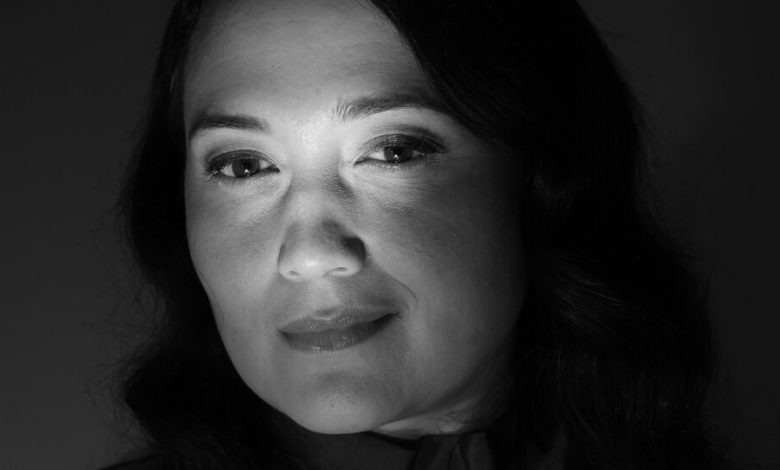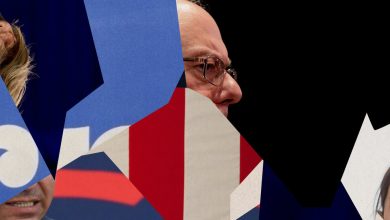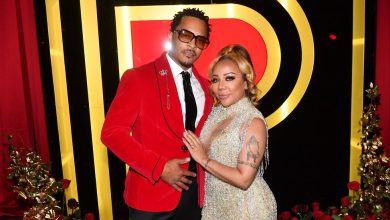Lily Gladstone Won’t Let Hollywood Put Her in a Box

In college, Lily Gladstone studied the history of Native American actors in Hollywood. Now, she’s making it.
The 37-year-old actress has been checking off all sorts of awards-season firsts thanks to “Killers of the Flower Moon,” the Martin Scorsese-directed period drama in which she plays Mollie Burkhart, an Osage woman whose relatives are systematically murdered by her husband (Leonardo DiCaprio) and his uncle (Robert De Niro) in a bid to seize her family’s oil-rich Oklahoma land. If Mollie is the movie’s conscience, Gladstone is its center of gravity: Even when she shares scenes with A-listers like DiCaprio and De Niro, the film bends to her.
That portrayal has so far earned Gladstone a best-actress win from the New York Film Critics Circle and nominations from the Golden Globes and Critics Choice Awards, and major nods from the Screen Actors Guild and the Academy Awards are likely to come in the weeks ahead. In the run-up to those ceremonies, Gladstone has been a hotly pursued presence for round tables and events on both coasts, and she’s taken to those opportunities with such command — using her platform to amplify other Native voices and concerns — that you’d never know that she wasn’t used to this, or that for a long time, she was hesitant to engage with Hollywood at all.
“There’s a handful of people who love film that have been aware of my career for a while, but this has been like being shot out of a cannon,” Gladstone said, tracing the far-flung route that has led her to all those awards-show ballrooms. “My dad’s a boilermaker, my mom was a teacher. I was raised on a reservation, went to public school. It’s a very normal, sort of working-class upbringing in one way, and in another way, I’m just a rez girl.”
Onscreen, Gladstone has the profile and indomitable presence of a 1940s film star. In person, when we met last month at a rooftop restaurant in Beverly Hills, Gladstone was more approachable but every bit as striking, with vivid brown eyes that her father once warned her were eminently readable. He said this mostly to dissuade her from telling lies, but he was right: When we feel for Mollie, it’s because of the fear and righteous indignation that Gladstone can convey in just a look.
She also has a wry sense of humor, glimpsed in some of the Scorsese film’s lighter moments, and an ability to punctuate her conversation topics and awards-season speeches with an impressive command of history and facts. “Lily is a big nerd wrapped up in this very giving, curious person,” said the director Erica Tremblay, whose film “Fancy Dance” starred Gladstone. “If you’re at a dinner party with Lily, you’re going to find yourself talking about physics and bumblebees — and when I say she’ll be talking about physics, she’ll be talking about some very specific theory that Lily will know the mechanics of inside and out.”

Awards season has meant perks like being interviewed by her favorite actress, Cate Blanchett. “I’m hugging myself right now,” Gladstone said. “I know your readers can’t see that.”Credit…Thea Traff for The New York Times
At an Elle event in December celebrating women in Hollywood, Gladstone was honored alongside the likes of Jennifer Lopez, America Ferrera and Jodie Foster, but she particularly sparked to meeting the academic Stacy L. Smith, whose University of Southern California think tank, the Annenberg Inclusion Initiative, had recently issued a report about Native American representation in Hollywood. After analyzing 1,600 films released from 2007 to 2022, Smith found that the amount of speaking roles for Native American actors was virtually nil, less than one quarter of 1 percent of all the roles cataloged.
A leading role like Gladstone’s in a film the size of “Killers” isn’t just unusual, it’s unprecedented, so much so that Smith subtitled her report, “The Lily Gladstone Effect.” Gladstone can hardly wrap her head around that recognition. “It’s the kind of paper that if I were a student now taking the same class, I would be citing in my studies,” she said.
For DiCaprio, Gladstone has more than earned the plaudits. “To see her rise to this occasion and be somebody that’s so formidable as far as understanding the depth of her own industry and Native American history, it’s an incredible moment to be a part of,” he said in a phone call. “I’m just glad to be next to her.”
To tout his co-star, DiCaprio has been a willing participant in the sort of red-carpet photo opportunities and awards-season parties he’d normally eschew. “It’s insane,” Gladstone said. “It’s like I’m trotting this mythical creature around, out and about, and he’s doing so of his own volition.” The ante was upped even further when Gladstone learned that her favorite actress, Cate Blanchett, would conduct a Q. and A. with her after “Killers” screened in London. “I’m hugging myself right now, I know your readers can’t see that,” she told me.
Gladstone acknowledged that sometimes, the intensity of the awards-season spotlight can feel overwhelming. “I can’t speak from the heart if I’m not connected to what’s real about all this,” she said. In those moments, she endeavors to carry her community forward with her: “I know that all of this attention on me right now means so much more than just me.”
In other words, don’t expect Gladstone to come out of this experience transformed into a demanding Hollywood diva, as so many have before her. She can’t be bowled over, onscreen or off.
“I’ve talked to a lot of people who know Lily Gladstone and have been friends with her for a long time and seen this journey, and she is so steadfast and so immovable in terms of her values and her core,” Tremblay said. “I think she’ll be exactly the same, but with fancier clothes.”
AS A CHILD growing up on the Blackfeet Reservation in northwestern Montana, there was one week that Gladstone looked forward to all year, when the Missoula Children’s Theater would roll up in a little red truck, construct a set out of P.V.C. pipes and cloth backdrops, and cast local kids in a production that the whole community would come out to see at the end of the week. “I was bullied a lot when I was a kid, partly because I was just goofy,” Gladstone said. “But that one week a year is when I was cool.”
In the group’s production of “Cinderella,” the young Gladstone decided to play her ugly stepsister as if she were Roseanne Barr, studying how to walk and talk like the comedian. It was a lightning-strike moment when she realized that a little bit of craft could go a long way.
“Somebody picked up on that in the audience and said, ‘She’s funnier than Roseanne,’” Gladstone said. “And my parents reminded me that somebody there from our community said, ‘We’re going to see her at the Oscars one day,’ just from that.”
Performing has always been Gladstone’s true north, the place to which her inner compass is most attuned. She remembers watching “Return of the Jedi” at 5 and feeling such a strong desire to be an Ewok that she knew someday, she’d be on the other side of the screen. Similarly obsessed with “The Nutcracker,” Gladstone signed up for ballet, which she assumed would be the big performative outlet in her life until the body shaming became too tough to take: “Not just weight, but things like, ‘Your middle toe is too long,’” she said. “I’m like, ‘Hey, my grandma gave me that middle toe!’”
But even in ballet class, instructors told her she was a natural-born actress, less concerned with nailing movements than with communicating a character. In her teenage years, when Gladstone’s family moved from Montana to the sometimes alienating suburbs of Seattle, she plunged fully into performance, acting in off-campus plays and auditioning for independent films. During her senior year, fellow students voted her “Most Likely to Win an Oscar.” They could already tell that acting was something she lived and breathed.
“It gave me an identity when my identity was forming and reforming,” she said. “Being known as an actress felt good even when I wasn’t working, even before I got my SAG card, when people asked what I did: ‘Yeah, I’m working at Staples right now, but I’m an actress.’”
In her 20s, many of Gladstone’s actor friends moved to New York or Los Angeles, but she was reluctant to follow suit. “I knew if I came to L.A. and was doing audition after audition, it would be really difficult for me,” she said. “And I knew how easily my love of ballet had been shot down by these boxes that I couldn’t fit in, so I was like, ‘I’m going to protect this a little bit.’”
The boxes in Hollywood can be pernicious, and Gladstone is still wary of them. “I know myself and I know I’m difficult to cast,” she said. “I’m kind of ‘mid’ in a lot of ways.” Gladstone hastened to add that she didn’t mean “mid” like meh, dismissively as Gen Z uses it. Instead, she meant the word quite literally. She is in-between, hard to place, neither this nor that. Part of it is that she’s mixed-race: Her father is Blackfeet and Nez Perce, her mother white. But there is another part, too.
“It’s kind of being middle-gendered, I guess,” said Gladstone, who uses both “she” and “they” pronouns. “I’ve always known I’m comfortable claiming being a woman, but I never feel more than when I’m in a group of all women that I’m not fully this either.”
She recalled a heartfelt moment at Elle’s Women in Hollywood event when Jodie Foster told the nonbinary “The Last of Us” actor Bella Ramsey that the room was full of supportive sisters. “That’s wonderful and that’s true,” Gladstone said, but afterward she went up to Ramsey to “introduce myself and let them know, ‘You also have siblings here, too.’”
Instead of moving to Hollywood, where she might have been prodded into walking a narrower path, Gladstone spent her postgraduate years in Montana, doing theater and renting out basements with like-minded performers just to make something. Working in independent films and Native-centric productions allowed her to qualify for the Screen Actors Guild without ever having to move her home base, and a breakthrough role in Kelly Reichardt’s 2016 indie “Certain Women” raised her profile considerably. Still, the mega-budgeted “Killers of the Flower Moon” represents a comparative quantum leap: Though Gladstone was unsure about coming to Hollywood, in the end, Hollywood came to her.
It’s a heady thing to go from semi-known to perceived on a major scale, as Gladstone found out during the film’s mammoth Cannes Film Festival premiere in May, when photos of her walking the red carpet with DiCaprio were beamed all over the world. But the actual premiere of “Killers” in October provided an unexpected respite, since the actors’ strike at the time prevented Gladstone from promoting it.
A silver lining was the number of Osage people who instead spoke at the movie’s premiere, enjoying the sort of red-carpet moments that would have typically gone to the film’s striking actors. Watching them discuss and debate “Killers” reminded Gladstone that she was raised to listen to her elders, and the strike-imposed silence provided the perfect opportunity to collect her thoughts and reflect.
“There’s a level of ego that is wrapped up with being a public person speaking for other people, and a level of ego it takes being an actor, too,” she said. “So I think it was a real gift to be able to sit there and have another reminder that this is way bigger than me.”
She spent the film’s opening day on a picket line in Times Square, marching back and forth in the rain near the New York headquarters of Paramount Pictures, the studio that distributed “Killers” with Apple. “It was a little bit of my contrarian nature to choose Paramount that day,” Gladstone admitted with a grin. Later, while dining at an Italian restaurant in the city, a couple sitting next to her asked if she was Lily Gladstone from “Killers of the Flower Moon.” It was the first time she felt permission to own it.
“I was like, ‘Yes, I am. Today, I am Lily Gladstone.’” Months later, recounting the story, she was still beaming.
IF GLADSTONE IS nominated for a best actress Academy Award on Jan. 23, she’ll be the first Native American contender in that category. With a win, she’d become the first Native performer to earn a competitive acting Oscar.
Still, it’s one thing for Hollywood to celebrate underrepresented actors, and a whole other thing to actually provide for them afterward. Academy members were moved to vote for recent winners like Troy Kotsur (“CODA”) and Ke Huy Quan (“Everything Everywhere All at Once”) in part because of their inspiring personal narratives, but follow-up projects on par with their winning films can be hard to come by. DiCaprio hopes that Gladstone’s breakthrough year will finally change things.
“I think she realizes that this really is a historical moment,” he said. “I know she has a plethora of other stories that she wants to tell, and I want her to be given those opportunities.”
Whatever this season has in store, Gladstone is ready to make the most of it. At a recent Academy Museum gala, the Oscar-winning actress Jennifer Connelly asked to meet Gladstone and wondered whether the demands of campaigning had already run her ragged. Gladstone was surprised to find herself replying that so far, she was doing just fine: “Maybe it says something about me that I’m kind of enjoying all of this right now.”
The wider world appears invested in her success, too. After “Killers” received a standing ovation at Cannes, a clip of Gladstone’s moved reaction to the applause earned millions of views. Why does she think that video went viral, with so many excited commenters predicting the Oscar glory that now appears within reach?
“I think people root for folks that come up from the grass roots having this global-stage moment, this dream coming true,” she said. “That’s something that I wish on everybody at some point in their lives, in whatever form that takes, and also for Native people.”
Gladstone confessed that she had watched the Cannes clip “about a thousand times” since the premiere: “It’s a moment of transcendence that was wonderful to have captured.” But the moment was about more than just her own time in the spotlight: She recalled the way her Native co-star William Belleau let out a whooping war cry during the ovation and how the applause for the women playing her sisters — Cara Jade Myers, JaNae Collins and Jillian Dion — prompted Gladstone to let out a trilling lele. It wasn’t just a celebration. It was a release.
“Whatever that oppressive system is that sometimes develops with colonial governments, that moment of transcendence for all of us, those are the healing moments,” Gladstone said. “Those are the ones that show people very clearly that we’re still here and we’re excellent. We’ve survived and we’re just soaring now.”



